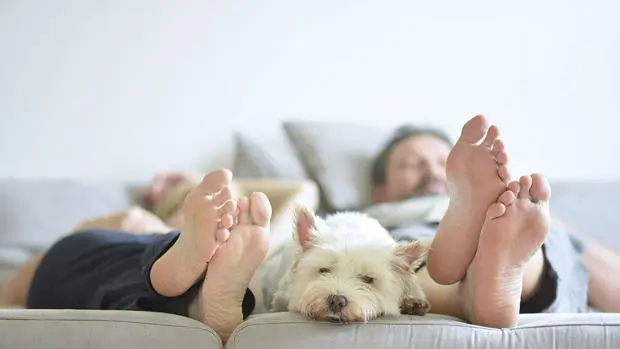Contents
Experts advise gradually resuming sports activity if physical exercise has not been practiced during the weeks of confinement

If the only physical activity that has been done during confinement has been getting out of bed and sitting on the sofa, the body is likely to suffer the consequences sooner than expected. As Alberto García Bataller, doctor in Physical Activity and Sports Sciences explains, that prolonged inactivity over time can lead, on the one hand, to the loss of bone mineral density (in bones and joints) and, on the other, to the reduction of muscle mass. And that, as he clarifies, will not only make those people have after him confinement less strength and less balance, but will also suffer more pains and more difficulties on a day-to-day basis. I don’t mean
to have problems exercising, but it is likely that some simple things such as picking up a child, going up or down stairs, cleaning a window or putting up curtains are even more expensive tasks, ”explains García Bataller.
So the key to prevent those possible consequences is to think that, although it has remained inactive until now, it’s never too late to start exercising. “Even if we feel ridiculous for walking around the house, something as simple as getting up from the sofa every two hours to walk a minimum of 15 minutes at a good pace can be vital for our health”, proposes García Bataller, who insists on that it is not necessary to make great efforts to maintain a daily physical activity.
The group of experts on physical exercise of the Spanish Society of Endocrinology and Nutrition (SEEN) agrees with this recommendation, and also recalls that the moderate intensity physical activity It stimulates the functioning of the immune system, reduces the risk of viral infections of the respiratory tract and can have psychological benefits, as it helps to reduce the levels of stress and anxiety generated as a result of the Covid-19 pandemic.
In addition to walking at a good pace every day, even if it is inside the house, the SEEN suggests going up and down flights of stairs inside the house, if possible, or practicing exercise by following online videos from professional sources.
Another idea proposed by the personal trainer Martín Giacchetta is to start with exercises that are already known instead of trying routines that have never been done. “Some people withdraw from sport when they do not feel safe with the practice, so it is a good time to get back to school. ‘lifelong’ exercises, those that were learned in school or in youth such as push-ups, squats, abdominals, lunges and everything that transmits good memories and something positive because that will motivate us to regain mobility and strength, “he says.
Necessary prior conditioning
Those people who already practiced exercise before confinement and who have reduced or even eliminated their activity during these weeks, should remember, as advised Juanjo Rodriguez, Bachelor of Sports Sciences and personal trainer, that your body needs a period of adaptation before resuming the previous routine.
A good period of conditioning or activation of the body to resume exercise can be two weeks for those who maintained physical activity or four weeks if they were inactive during that period. Thus, in those first two weeks, the expert recommends, on the one hand, performing the aerobic activities (walking at a good pace, jogging, cycling …) that allow to improve cardiorespiratory capacity and the musculoskeletal system and, on the other, strength exercises to preserve muscle and bone health focused on the “core”, abdomen, buttocks, back area and ankles. “The important thing in both cases, both with aerobic activity and with strength training, is that we do the exercises with an intensity of 60% with respect to what we did before so that the body takes tone and gets used to it,” he explains.
Once we have followed a work pattern of two weeks, with two days of aerobic activity and two days of strength training, the expert advises to increase the intensity progressively until we reached the rhythm we had before confinement.
Basic routine to gain mobility
To avoid muscle problems after confinement, Alberto García Bataller suggests that people who are not used to exercise, at least do this routine twice a day (in the morning and in the afternoon). “If they do it daily, they can return to normal without additional muscle problems,” he clarifies.
1. Sit in and out of the chair ten times. As the body adjusts, you can increase the repetitions or do two sets of ten with a break.
2. From a sitting position in a chair hands are raised above the shoulders toward the ceiling until your elbows are extended. “This works to work the mobility of the shoulders and back,” he says.
3. Support your back to the wall trying that both the head and the back touch the maximum possible surface of the wall. This movement is performed ten times. This action is intended to help prevent slouching, which is common when physical activity is not performed.
4. Go up and down stairs two or three times a day. If you do not have a ladder at home, you should walk at a good pace inside the house for about 15 minutes every two hours.









